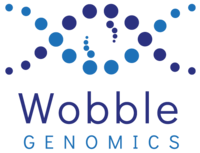The LongTREC program brings together 11 European public and private host institutions to create a European network of experts in long reads sequencing technologies, data integration and software development. In addition, we have the support of 17 partner organizations from many diverse research environments who are leaders in complementary aspects of the lrRNA-seq roadmap. The consortium has been carefully designed to combine specific competences that can be jointly exploited to address the necessities of the LongTREC research and training program.
Host Institutions
Consejo Superior de Investigaciones Cientfíficas
-
Instituto de Biología Integrativa de Sistemas
Spain
The Spanish National Research Council (CSIC) is the largest public institution dedicated to research in Spain and the third largest in Europe. The I2SysBio is a joint research institute involving Universitat de València (UV) and CSIC focused on the investigation of the structure, function, dynamics, evolution and manipulation of complex biological systems.
Biobam Bioinformatics
Spain
BioBam is a leading bioinformatics solution provider which accelerate research in disciplines such as agricultural genomics, microbiology and environmental NGS studies, amongst others.
Centre National de la Recherche Scientifique
France
The French National Centre for Scientific Research (CNRS) is the French state research organisation and is the largest fundamental science agency in Europe.
Earlham Institute
UK
Earlham Institute (EI) is a life science research institute focused on exploring living systems by applying computational science and biotechnology to answer ambitious biological questions and generate enabling resources.
Oxford Nanopore
UK
Oxford Nanopore Technologies plc was founded in 2005 as a spin-out from the University of Oxford. With a best-in-class R&D team, Oxford Nanopore’s innovation drive has delivered a novel generation of sequencing technology and surrounding, enabling technologies. We continue to invest heavily in innovation, to drive disruption of the scientific markets.
Stockholm University
Sweden
Stockholm University is one of Europe’s leading centres for higher education and research. The department of mathematical statistics aims to get deeper insights in the mathematical analysis that helps building up models in physics, chemistry, biology, economy etc.
Centre for Genomic Regulation
Spain
National Institute of Biology
Slovenia
The National Institute of Biology (NIB) is one of the independent Public Research Institution for Life Sciences in Slovenia. The basic activity of the Institute has been and continues to be basic, developmental and applicative research in the fields of biotechnology, biophysics, biomedicine and system biology.
Max Planck Institute for Molecular Genetics
Germany
Research at the Max Planck Institute for Molecular Genetics (MPG) concentrates on understanding function and regulation of the genome. The Department of Computational Molecular Biology comprises scientists coming from various backgrounds and pursue biological questions through a combination of computational and experimental approaches.
Instituto Italiano di Tecnologia
Italy
The Istituto Italiano di Tecnologia (IIT) is a multidisciplinar scientific research centre. The scientific mission of the Research Line in Genomic Science is the development and application of advanced genomics technologies for the discovery of the molecular mechanisms underlying human disease.
Commissariat a l’energie atomique et aux energies alternatives
UK
The French Alternative Energies and Atomic Energy Commission (CEA) is a public scientific, technical and industrial research organization. Genoscope is developing methods and projects for the exploitation of biodiversity, in particular with respect to massive DNA sequencing and bioinformatics. The main activities of the Laboratory of Bioinformatics for Genomics and Biodiversity are to develop and evaluate new bioinformatics technologies and software.

























